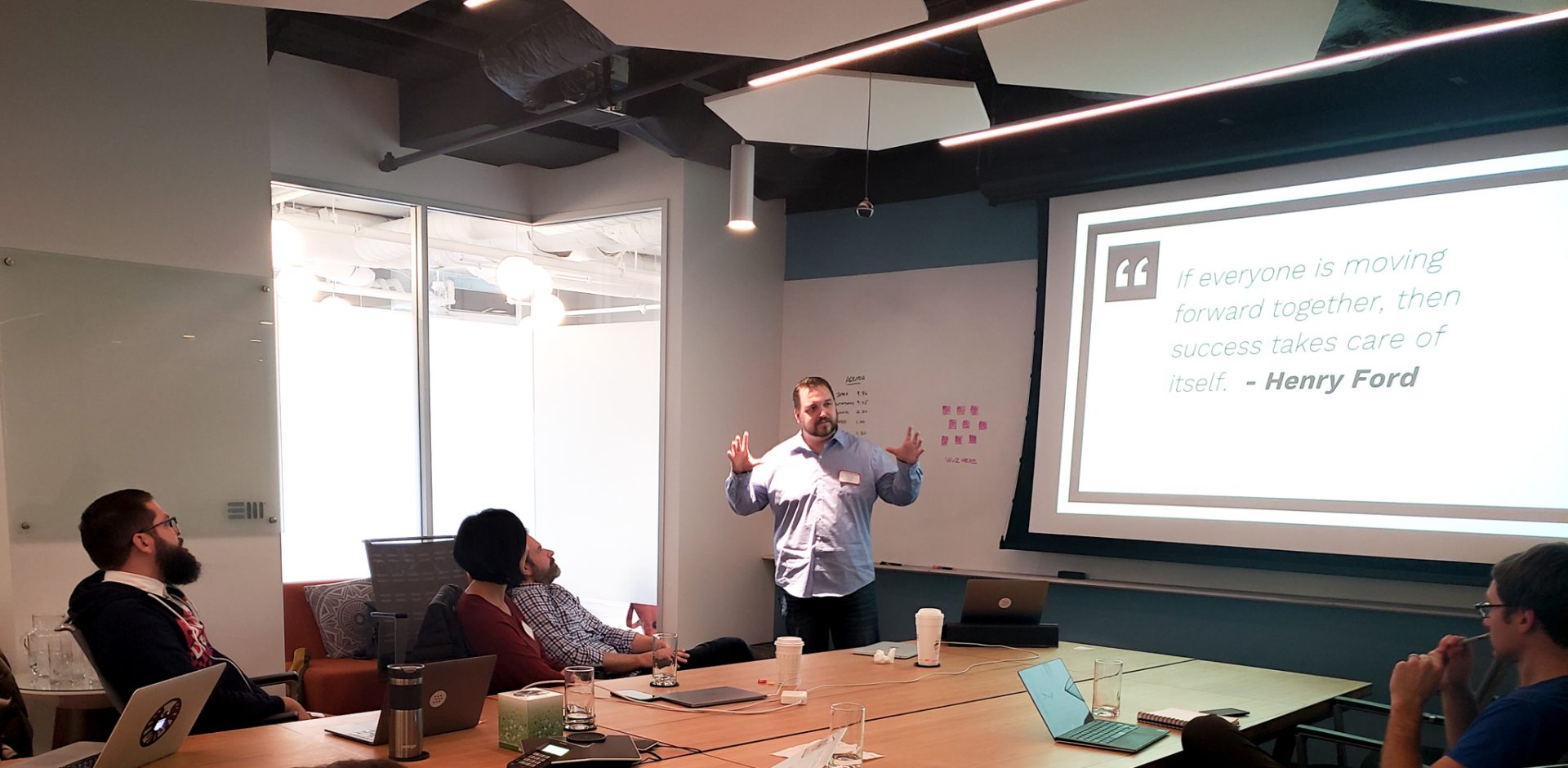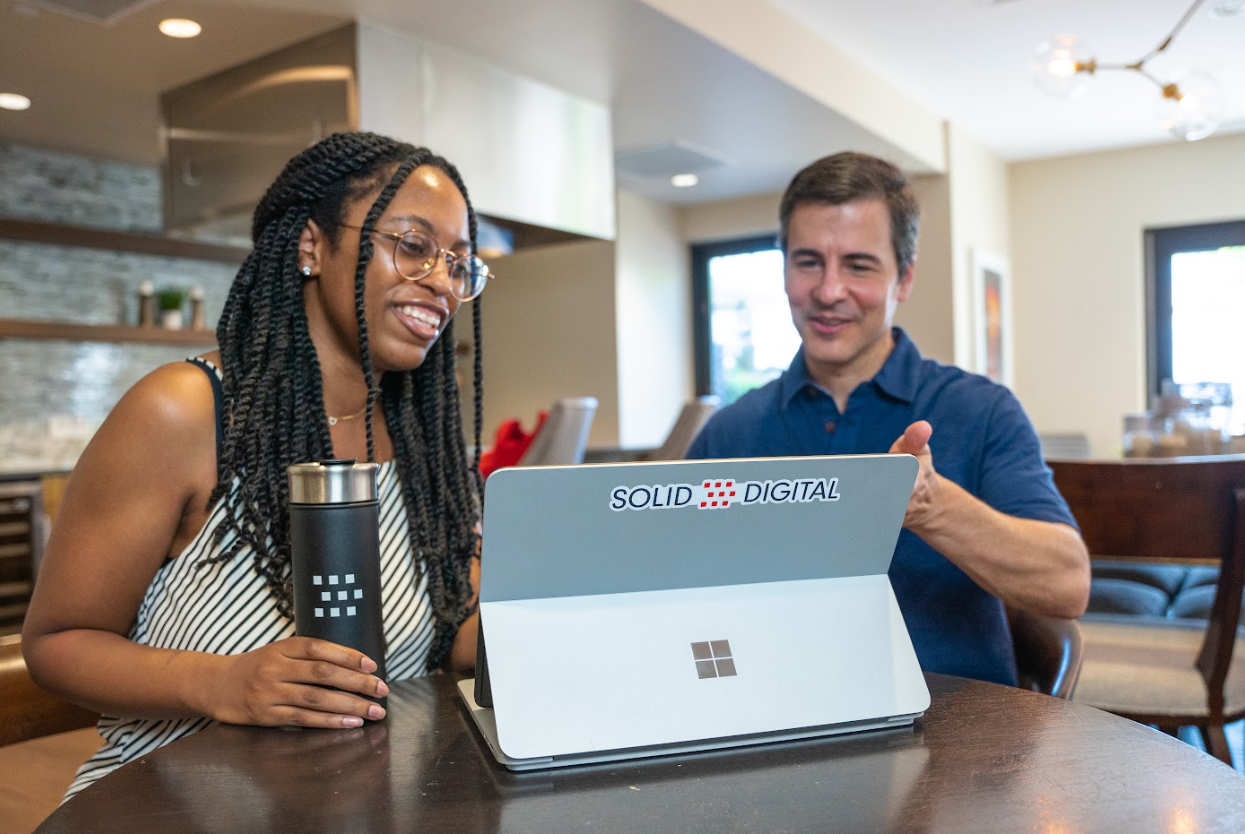One of the most commonly asked questions we get from marketing leaders prior to starting a website redesign project with is is how much time will be needed from my team? This is a really important part of planning and vital to ensuring that time and resources can be set aside for the busiest, most demanding parts of the project.
At Solid Digital, our overall goal is to break up the work into manageable pieces so that it doesn’t get overwhelming for any team member. We work with our main point of contact to delegate the work amongst their team members and have a clear plan in place to meet key milestones and deliverables.
Let’s take a deeper look into the key touch points throughout our projects, who needs to be involved and how much time they typically need. Of course this is a general estimate and will vary depending on the size and scale of the website, but we hope it provides some insight.
Kickoff – 1 hour
Who: Project Stakeholders
The kickoff meeting is intended to start the project off on the right foot with introductions to the teams, the tools that will be used and reviewing the scope and goals of the project. It is also an opportunity to prepare everyone for next steps and to review an initial draft of the schedule and project timeline.

Knowledge Transfer – 1-2 hours
Who: Client Project Lead
It is important for the project team to gain a deep understanding of the brand and goals for a new website. Sharing relevant information such as brand guidelines, website examples (things you like, things you don’t), competitors, target audience, marketing materials etc can get the team started quickly on the right track.
Discovery Meeting – 2-3 hours
Who: Project Stakeholders
After our team has completed their initial research we use this collaborative worksession to dig deeper into target audience pain points, desires, needs, and customer journey. We also explore the brand personality and visual direction and discuss the sitemap, content, features and functionality for the site. We believe the true value of discovery is found when we work collaboratively with our clients to talk through these findings, discuss opportunities and build a plan for the site together.

Strategy Meeting – 2-3 hours
Who: Project Stakeholders
After the discovery meeting our team builds upon the agreed upon direction to create an initial sitemap, wireframes and styleboard for the new site. This discussion is meant to ensure that all of the requirements are included and the plan for the site will meet the objectives and goals set for the project when it’s completed.
Strategy Feedback – 2-3 hours per round
Who: Project Stakeholders
To refine the sitemap, wireframes and styleboard for the new site we look for a consolidated list of feedback on these. We typically complete 2 rounds of revisions before moving forward. When providing feedback it’s important to explain why something is not working so our team can provide the right solution.
Content Planning & Creation – Varies (but is typically requires the most effort)
Who: Your Content Creation Team
The level of effort in this phase depends on the amount of content that needs to be updated and/or created. This can often be the most time consuming part of the project. Understanding the amount of work required, the availability and capabilities of your internal team are important to determine if you need outside help and have the time needed to complete this without overwhelming your team.

Key Page Meeting – 1-2 hours
Who: Project Stakeholders
With the wireframes completed and content creation underway we build pages of the new site for each of the wireframes. In this meeting we review these pages to ensure the content needs are being met, the design direction is evolving as expected and that this framework and system will work to create the remaining pages for the new site.
Website Presentation & CMS training – 1.5-2 hours
Who: Project Stakeholders & Team Managing The Site Going Forward
Our teams walk through the staging site to review the final design and functionality of the entire site. There may be additional pages for your team to add such as team members or blog posts and we want your team to be able to easily manage and maintain the site once it’s live. We’ll walk through how to make these changes, answer questions and assign practice homework to ensure everyone is comfortable making the changes needed.
Quality Assurance (QA) – 8-10 hours per round
Who: Core Project Team
After we have done our initial Quality Assurance (QA) on the staging site we will ask your team to also review the site, testing it on different browsers and devices then provide consolidated feedback.
Remaining Content Entry – Varies
Who: Team Managing The Site Going Forward
The amount of time needed here varies. What is usually left here are pages that have multiples such as case studies, team bios, or services that can be easily replicated by looking at an initial example page that has been completed. These are also often content types that will be added or updated on a regular basis so allowing your team to practice on these before the new site is live is a great idea.
Weekly Status Meetings – 30 min per week throughout
Who: Core Project Team
Throughout the project it’s important to connect on open items and next steps to ensure everyone is clear and has what they need to move forward.
Obviously there are a variety of approaches when building a website but in our experience this structure is what we have found works best. Our goal is set expectations up front for a successful launch while working closely with our clients to make sure we’re aligned to hit their strategic goals. We want to avoid long hours and stress on top of everyone’s already full workloads by ensuring you have support when and where it’s needed each step of the way.



